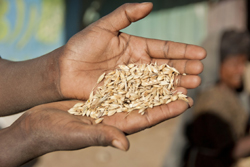Providing effective humanitarian aid
With EU support, the project 'The space of crisis: Towards a critical geography of complex humanitarian emergencies' (THE SPACE OF CRISIS) mainly aimed to establish a theoretical framework to shed light on the political geography (relationship between political processes and space, place and territory) of humanitarian emergencies. Research used insight culled from political ecology and economy, the study of society, economics and history, and critical theory. Researchers examined the nature of modern-day complex humanitarian emergencies in the Democratic Republic of Congo (DRC), Kenya and Uganda. These emergencies were considered as a separate political–geographical experience that is characteristic of the processes of uneven development that define contemporary globalisation. Researchers studied how global policy and procedure was developed in relation to the safeguarding of internally displaced persons (IDPs). This analysis shows that IDP policy forms a strong tool for bio-political governmentality — a government style that regulates populations through application and impact of political power on all aspects of human life. The project team examined the historical, political, social and economic situations that exist in the DRC and Kenya. Field research conducted in a Kenyan town investigated the reasons for and aftermath of a conflict-related humanitarian emergency. Results debunked the generally accepted explanations of what had caused the crisis. They revealed that the town's government-led regional development programme renewed hostilities between rival ethnic groups and political heads mainly engaged in land acquisition. Researchers also used field research to analyse the reasons why IDPs become susceptible in a specific territory of the DRC. The existing assistance and security schemes actually hinder IDPs because they do not consider the prevailing living conditions. Another reason is that international donor organisations promote stabilisation agendas instead of focusing on humanitarian interventions. THE SPACE OF CRISIS developed a theoretical framework for better understanding the political geography of complex African humanitarian emergencies. Foreign assistance and development stakeholders will use this knowledge in implementing more effective crises and conflict missions.



